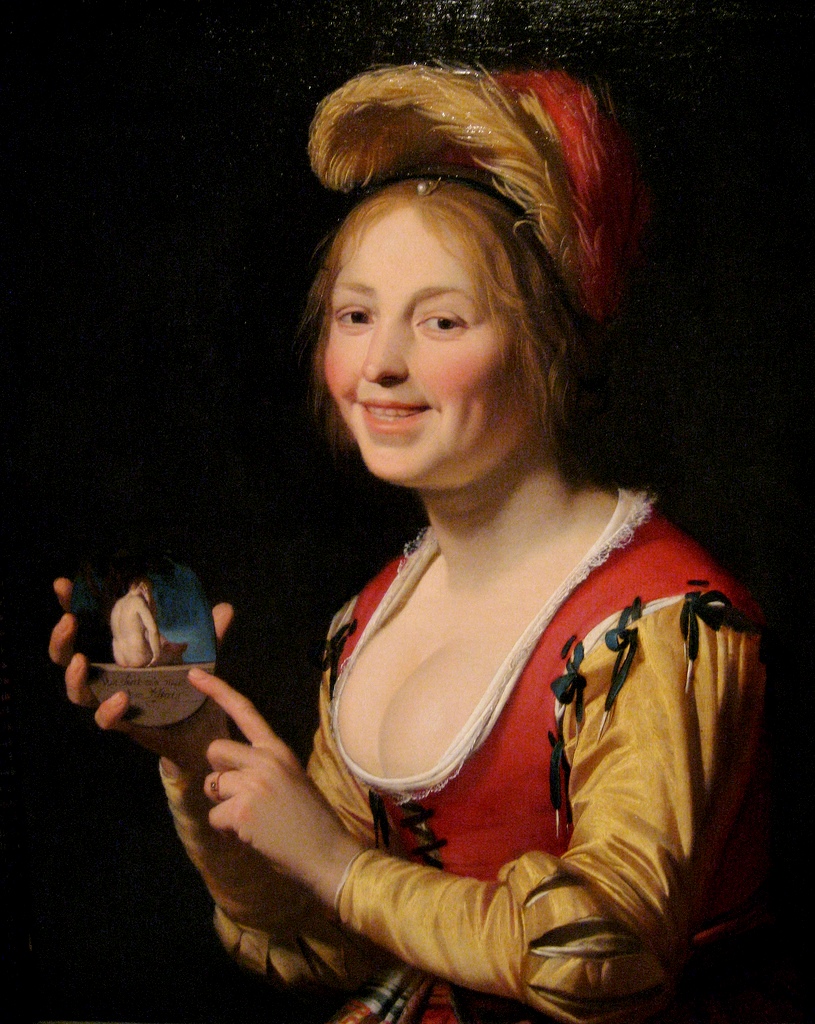|
Smiling Girl, A Courtesan, Holding An Obscene Image
''Smiling Girl, a Courtesan, Holding an Obscene Image'', also known in Dutch as ''Een Laggende Vrouw met een naakte Pourtraitje in de Hand, waar onder divisje staat'' ("A laughing woman holding a small picture of a nude in her hand, under which is a motto") or ''Jonge vrouw met een medaillon'' ("Young Woman with a Medallion"), is an oil on canvas painting by Gerard van Honthorst, created in 1625. It is held in the Saint Louis Art Museum where it is on view in Gallery 236. It depicts a prostitute dressed in gold and red clothing and pointing at a medallion she is holding up; the medallion depicts a seated naked woman, perhaps the same one, obscuring her face with her hand and captioned in Dutch language, Dutch "Wie kent mijn naers van Afteren" ("Who can recognize my buttocks, backside from behind?"). The form of the ij in 'mijn' is as a y with an acute accent. She is likely using this medallion to advertise her services, as this was a typical practice of the sex industry in the Net ... [...More Info...] [...Related Items...] OR: [Wikipedia] [Google] [Baidu] |
Honthorst Young Woman Medaillon
Gerard van Honthorst (Dutch: ''Gerrit van Honthorst''; 4 November 1592 – 27 April 1656) was a Dutch Golden Age painting, Dutch Golden Age painter who became known for his depiction of artificially lit scenes, eventually receiving the nickname ''Gherardo delle Notti'' ("Gerard of the Nights"). Early in his career he visited Rome, where he had great success painting in a style influenced by Caravaggio. Following his return to the Netherlands he became a leading portrait painter. Early life Van Honthorst was born in Utrecht, the son of a decorative painter, and trained under his father, and then under Abraham Bloemaert.Brown (1997), p.62 Italy Having completed his education, Honthorst went to Italy, where he is first recorded in 1616. He was one of the artists from Utrecht who went to Rome at around this time, all of whom were to be deeply influenced by the recent art they encountered there. They were named Utrecht Caravaggism, the Utrecht ''caravaggisti''. The other th ... [...More Info...] [...Related Items...] OR: [Wikipedia] [Google] [Baidu] |

